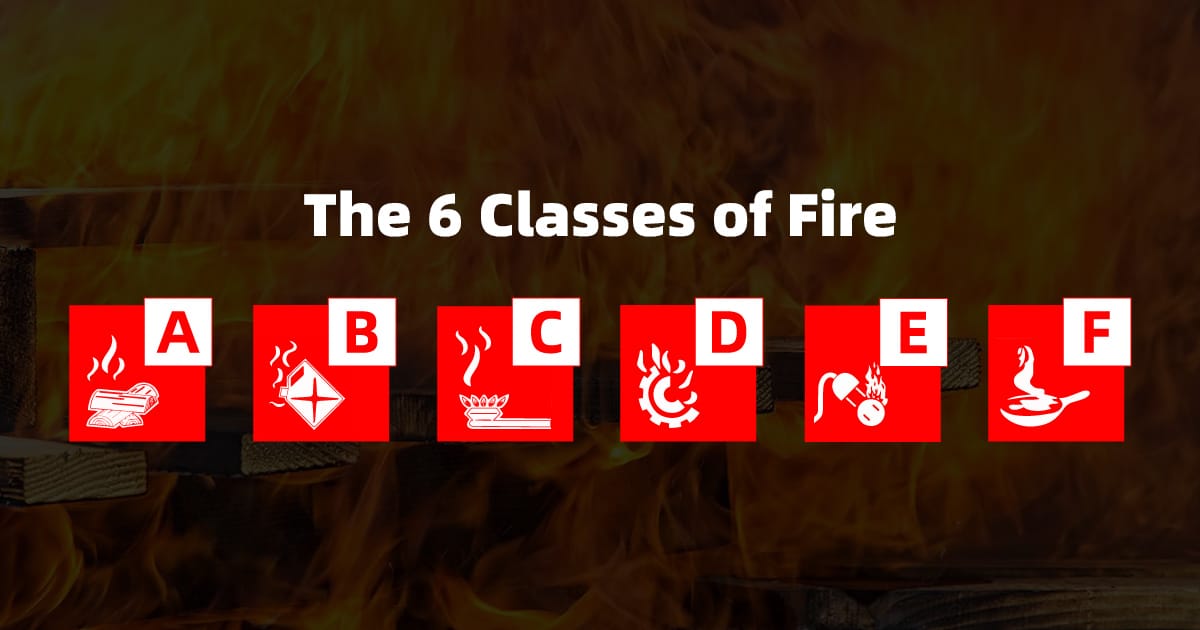Distinguishing the different classes of fire is incredibly important to fire safety because not all fire extinguishers are suitable for every type of fire. Use the wrong type of fire extinguisher could do more harm than good. There are 6 different classes of fire, and each should be attacked in a different way.
Here, we outline the various classes of fire, where they can potentially occur, and which fire extinguishers are suitable for each class of fire.
The 6 Class of Fires
- Class A Fire - Combustible materials
- Class B Fire -Flammable liquids
- Class C Fire -Flammable gases
- Class D Fire -Burning metals
- Class E Fire -Electrical fires
- Class F Fire -Cooking oils and fats
Different types of fire extinguisher
Each class of fire requires a certain type of fire extinguisher. You can quickly identify a suitable fire extinguisher by its label. The list below concisely highlights which classes of fire various fire extinguishers are suitable for.
- Powder fire extinguisher – Class A, B, C
- CO2 fire extinguisher – Class B and E
- Foam fire extinguisher – Class A, B, F
- Water fire extinguisher – Class A
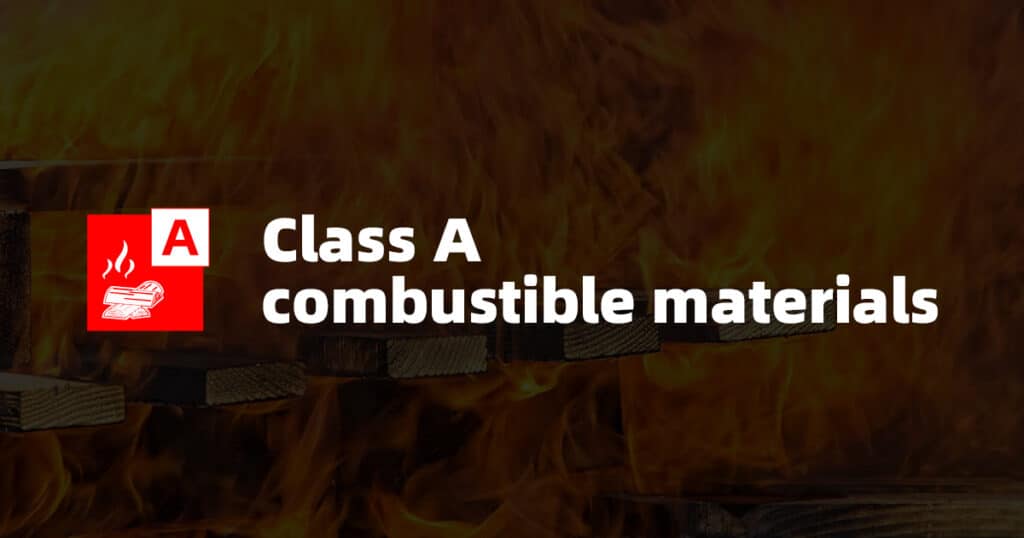
Class A (combustible materials)
Class A fires are generally caused by a naked flame or items of high temperatures coming into contact with combustible, carbonaceous materials.
Almost all premises are at risk of Class A fires due to the widespread use of such materials. This includes offices, schools, warehouses, hospitals, and anywhere that uses or contains paper, cardboard, wood, etc.
There are several types of fire extinguishers that can be used on Class A fires. These are powder, foam, water and wet chemical.
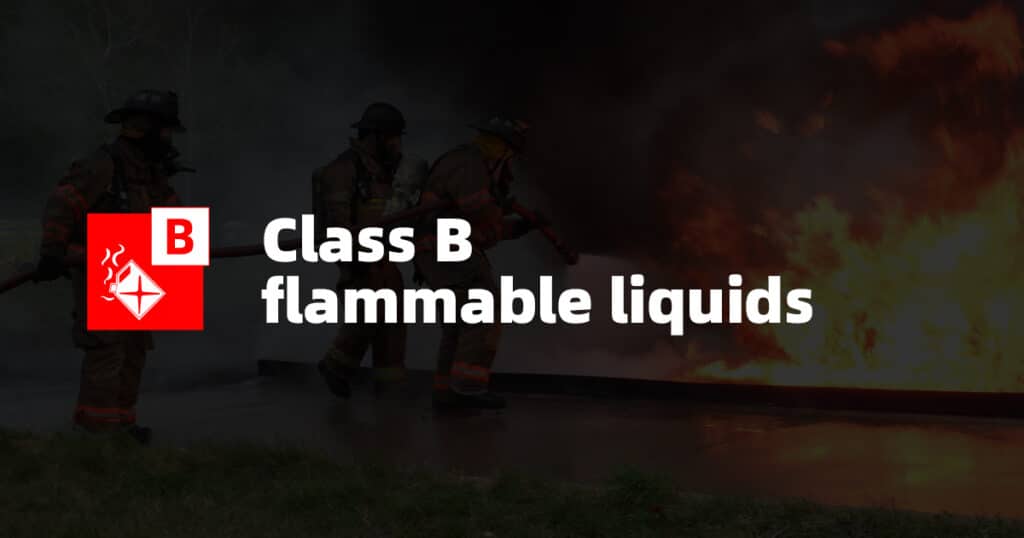
Class B (flammable liquids)
Class B fires occur when flammable liquids, such as petrol and spirits, are exposed to a source of ignition. These types of liquid are flammable by design and extremely volatile, if not stored safely.
Many settings, including restaurants, bars, garages, construction sites, laboratories, hospitals and petrol forecourts, are at particular risk of Class B fires and must keep suitable fire extinguishers on-site and mandatory fire safety signage to highlight the proper safety procedures of everyone onsite.
Fire extinguishers suitable for Class B fires are powder, CO2 and foam.
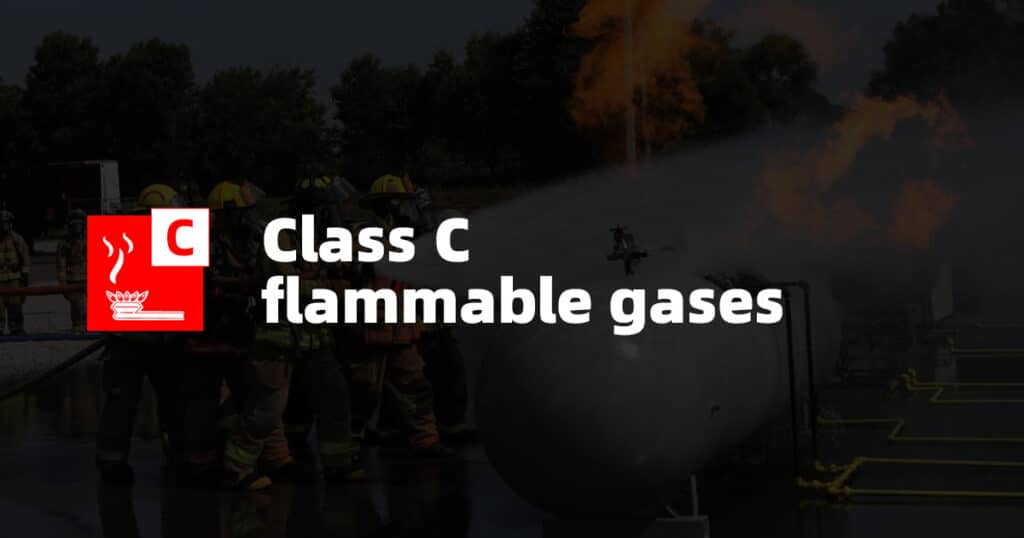
Class C (flammable gases)
Fires involving flammable gases, such as propane and butane, are known as Class C. Flammable gases must be stored correctly in sealed containers and only operated by a competent person.
Manufacturing and industrial warehouses, chemical plants or anywhere that stores large quantities of flammable gases are at particular risk of Class C fires.
Class C fires must be tackled using a powder fire extinguisher.
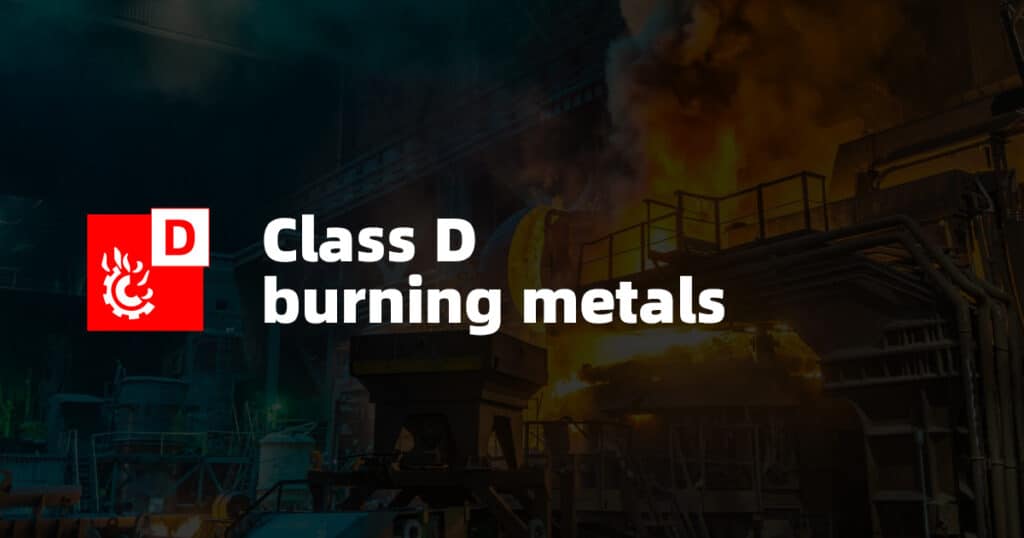
Class D (burning metals)
Class D fires occur when combustible metals, such as magnesium, lithium and sodium, ignite and are more prevalent in laboratories, warehouses and metal fabricators.
Only specialised fire extinguishers are suitable for use on Class D fires.
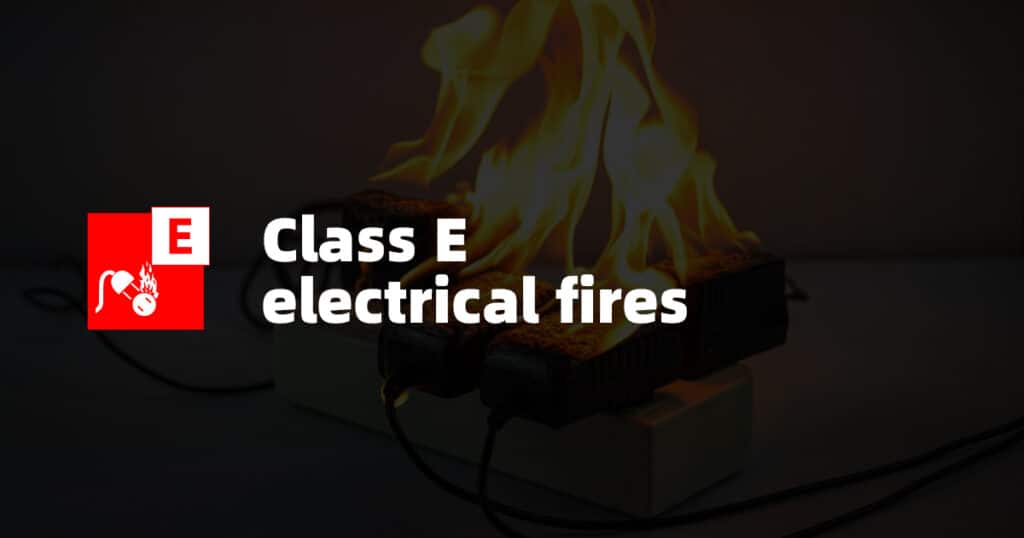
Class E (electrical fires)
Electrical, or Class E, fires are a risk to all premises that use electricity.
They occur when live electrical equipment is involved in a fire and must not be tackled by a liquid-based fire extinguisher. This is because water is a conductor and will spread the current across a greater area if used, potentially endangering the user of the fire extinguisher.
As a result, only powder (for electrical currents under 1000v) and CO2 fire extinguishers are suitable here, as they do not rely on a liquid agent.

Class F (cooking oils and fats)
Class F fires pose a risk to restaurants and kitchens. Fires from cooking oils and fats can be made significantly worse by using a liquid-based agent to extinguish them.
Fire extinguishers suitable for Class F fires are foam fire extinguisher.
To learn more about matching the class of fires to the suitable fire extinguisher, read our comprehensive guide to identifying fire extinguishers by colour.
